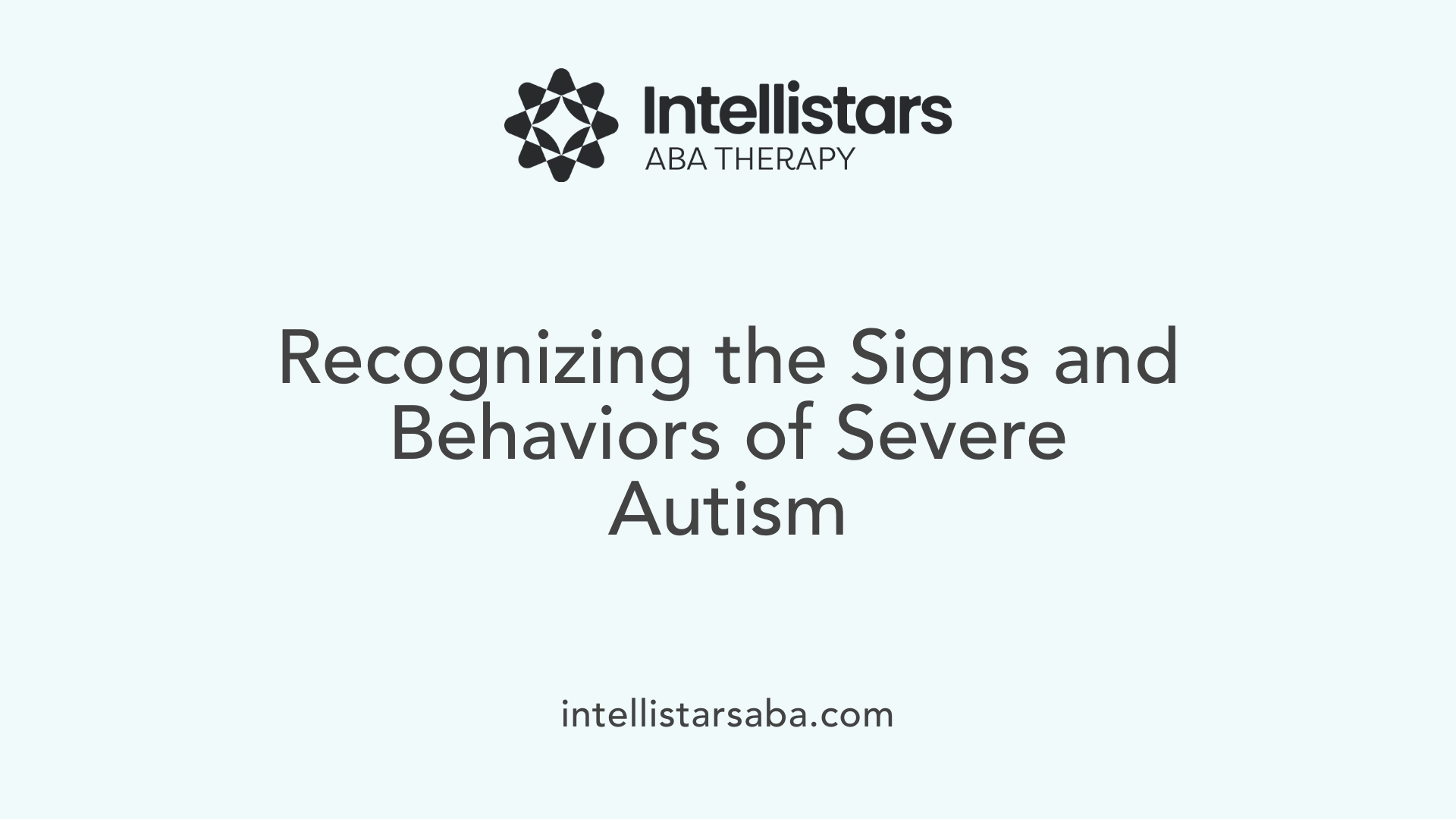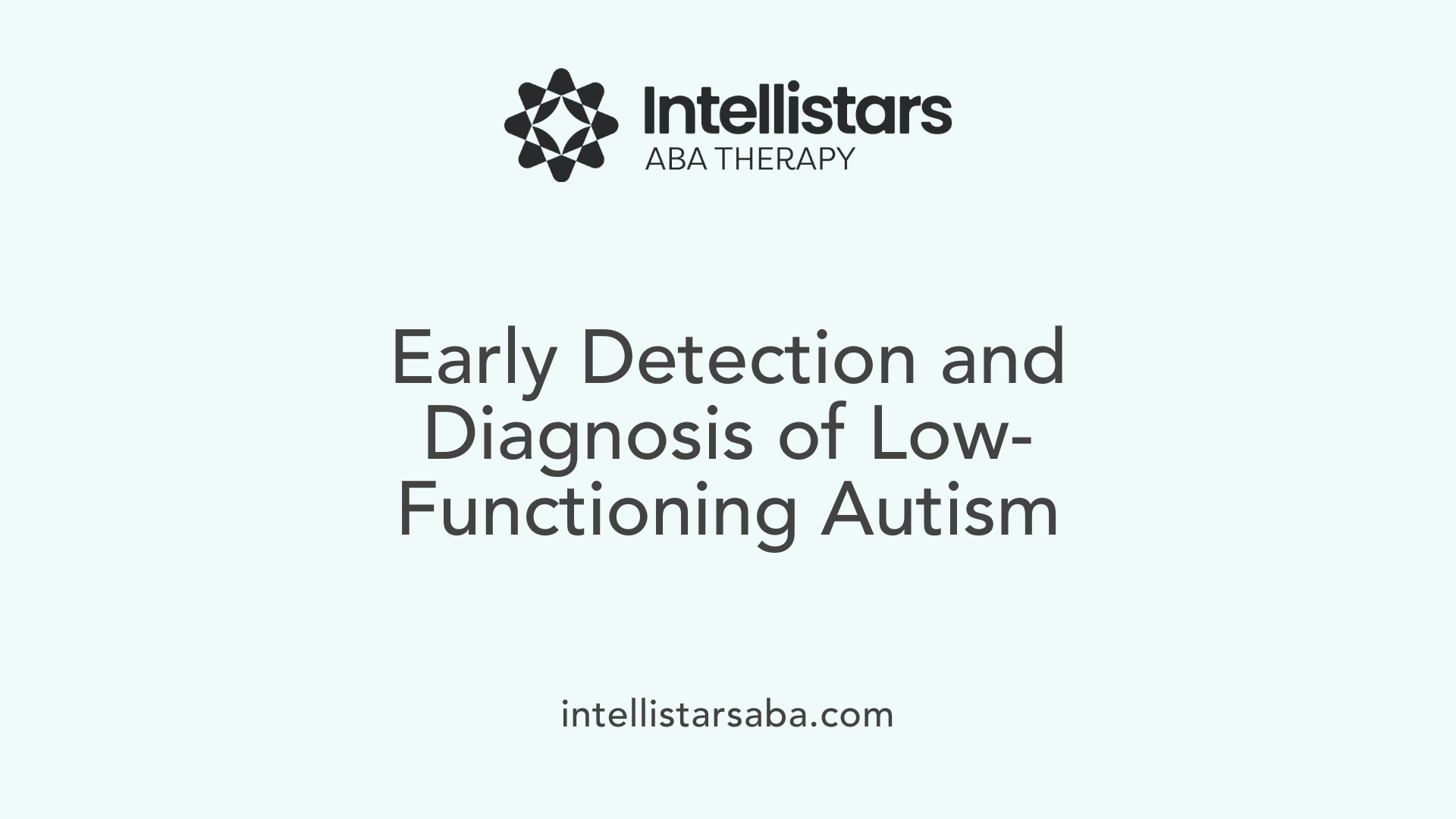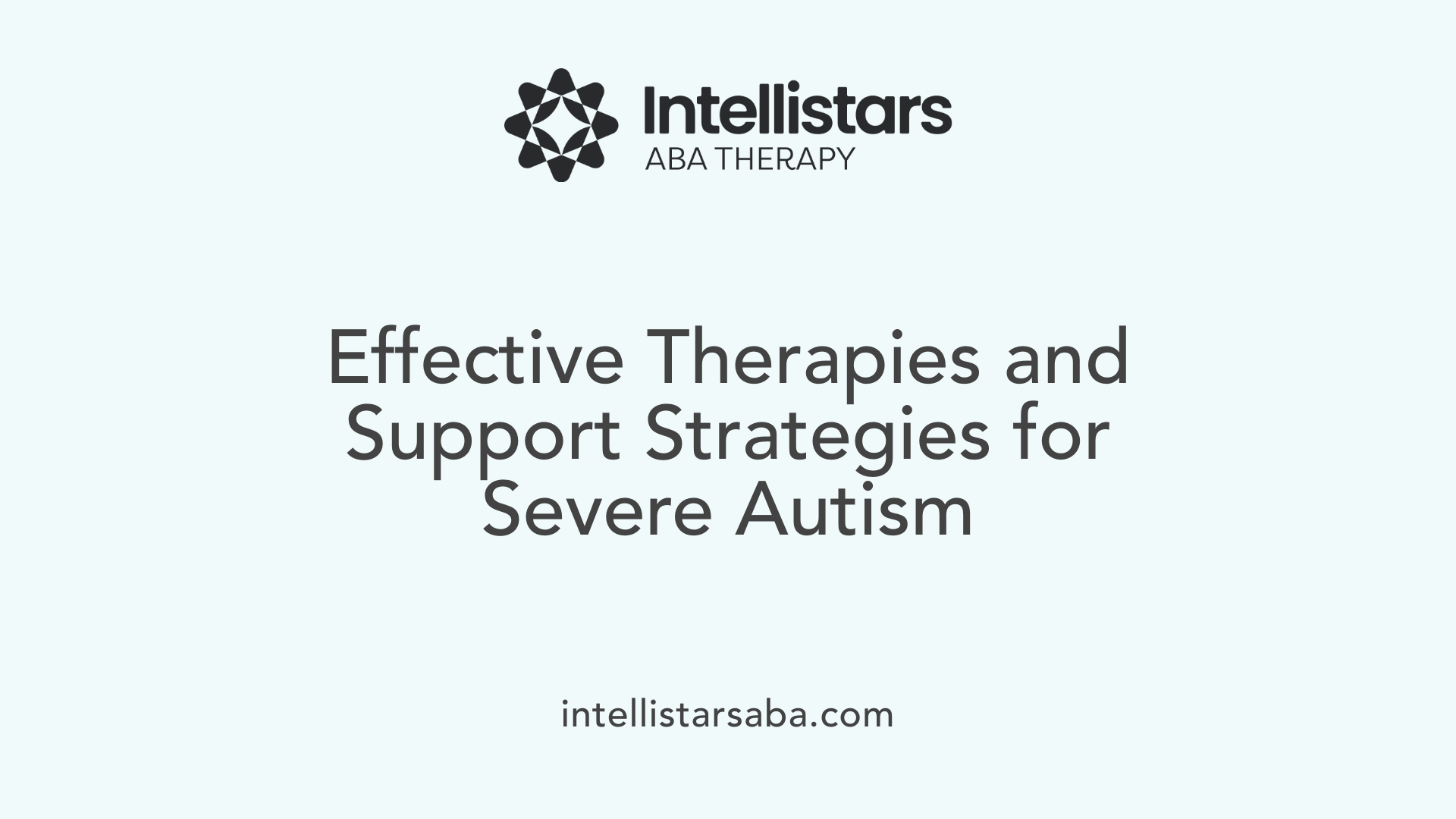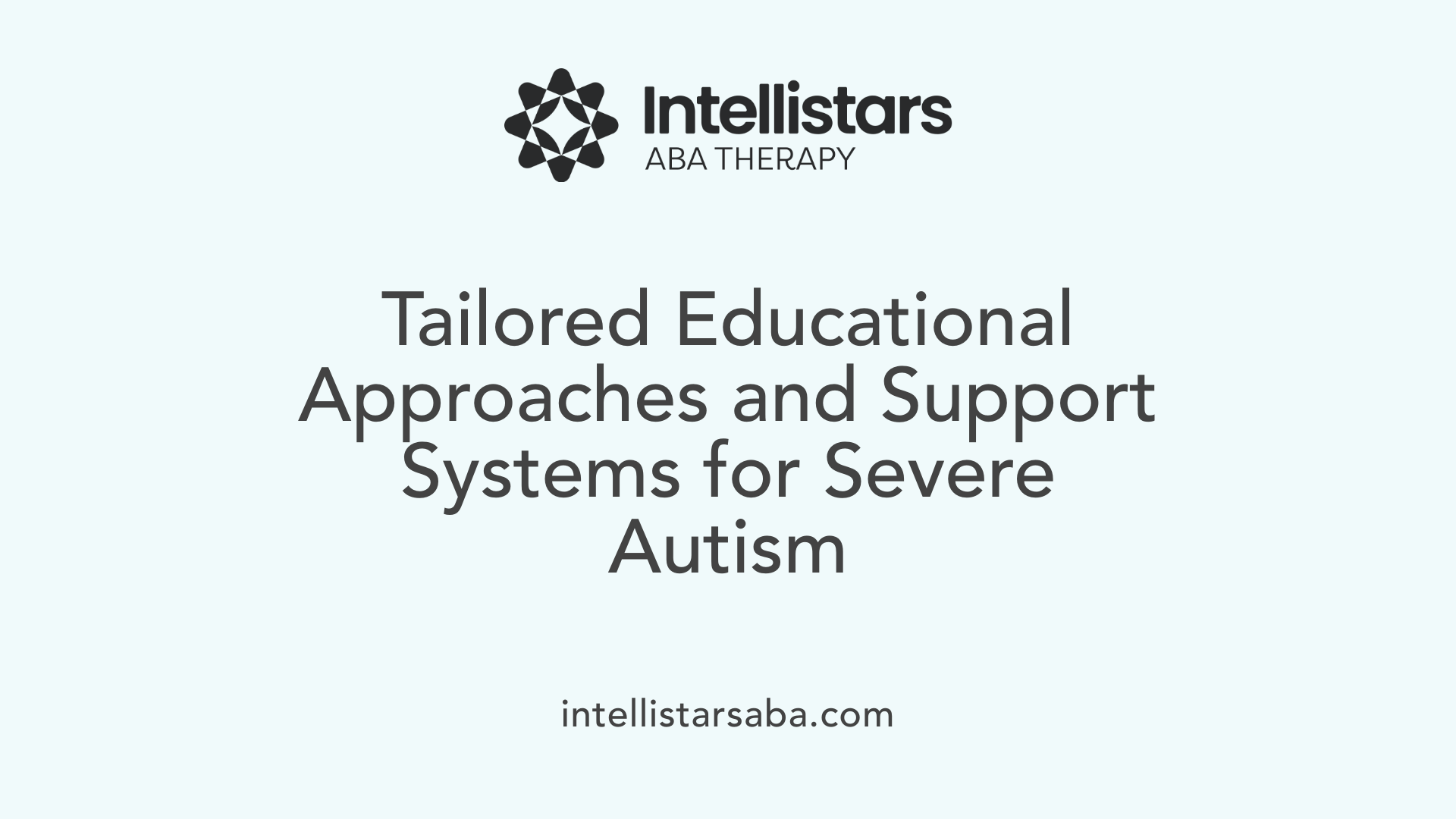Introduction to Low-Functioning Autism
Low-functioning autism, often referred to as severe autism, represents the most significant challenges faced by individuals within the autism spectrum. This article explores the symptoms, diagnosis, treatment options, educational strategies, and support mechanisms necessary to enhance the quality of life for those affected.
Defining Low-Functioning Autism and its Severity

What is low-functioning autism?
Low-functioning autism, also called severe autism, characterizes individuals on the autism spectrum who face the most profound challenges in social communication, daily routines, and behavior. These individuals are often nonverbal or have very limited speech, making communication a significant barrier. They need lifelong support to perform everyday activities such as dressing, hygiene, and safety. Many exhibit severe behavioral symptoms like repetitive actions, sensory sensitivities, and self-injury.
The presence of additional conditions is common, including epilepsy, Fragile X syndrome, and tuberous sclerosis. Intellectual disabilities are also frequently associated, with an IQ below 80. Early diagnosis and tailored interventions, such as behavioral therapies, speech and occupational therapy, are vital for improving their quality of life and encouraging personal skills.
What is the lowest functioning level of autism according to diagnostic criteria?
The American Diagnostic and Statistical Manual of Mental Disorders (DSM-5) classifies autism severity into three levels, with Level 3 being the most severe. This level indicates that individuals require very substantial support across multiple life areas.
Children and adults at Level 3 often display extreme difficulties with social interaction and communication. Many are nonverbal or have minimal speech capabilities. Their behaviors include rigid, repetitive patterns that interfere with daily functioning. They may struggle significantly with adapting to changes and understanding social cues.
This severity level also implies a high level of assistive support to ensure safety and develop skills. Overall, Level 3 autism represents the most intense challenges within the spectrum, necessitating extensive, ongoing aid.Understanding this level helps caregivers and professionals to provide appropriate resources and support strategies for those with the greatest needs.
Symptoms and Behavioral Characteristics

What are the symptoms and characteristics of low-functioning autism?
Children and adults with low-functioning autism display some of the most severe symptoms of the disorder. They often face significant challenges in communication, social interaction, and daily living skills. Many are nonverbal or have limited speech and may use repetitive language or echolalia. Understanding social cues and facial expressions can be difficult for them.
Behaviorally, individuals might engage in repetitive movements like hand-flapping or rocking and may exhibit self-injury such as head-banging or biting. Sensory sensitivities are common, which can cause distress from sounds, lights, or textures, affecting their ability to perform daily routines such as dressing or grooming. Cognitive abilities are usually below average, with IQ scores often below 80, and they might have co-occurring conditions like epilepsy, tuberous sclerosis, or Fragile X syndrome.
These individuals frequently experience behavioral issues, including aggression, high anxiety levels, and emotional outbursts. Their understanding of social rules and ability to adapt to new situations are often limited. Despite challenges, early therapeutic interventions can help develop some skills. However, many require lifelong support and assistance for overall functioning.
Diagnosis and Early Identification

How is low-functioning autism diagnosed and assessed?
Diagnosing low-functioning autism involves a thorough process conducted by experienced healthcare professionals. These specialists typically include developmental pediatricians, psychologists, speech-language pathologists, and occupational therapists.
Since autism cannot be diagnosed through blood tests or imaging, assessment relies on detailed developmental histories and behavioral observations. Professionals look for persistent challenges in social communication, interaction, and the presence of restrictive or repetitive behaviors that align with diagnostic criteria.
Standardized diagnostic tools are essential in the evaluation process. Common instruments include the Autism Diagnostic Observation Schedule (ADOS-2), Autism Diagnostic Interview (ADI), and Childhood Autism Rating Scale (CARS).
Early screening questionnaires like the Modified Checklist for Autism in Toddlers (M-CHAT-R), Social Attention and Communication Study-Rapid (SACS-R), and Autism Spectrum Quotient (AQ) test are often used as initial steps to identify children who may need detailed assessment.
Timely diagnosis is critical. Detecting early signs such as delayed speech, difficulties with social engagement, sensory sensitivities, and obsessive behaviors allows for prompt intervention. This early identification significantly improves the chances of developing communication, social, and daily living skills.
Developmental milestones and early signs
Children with low-functioning autism often display delays in reaching key developmental milestones. These include late sitting, crawling, or walking, and challenges in forming relationships.
Early signs to watch for include:
- Lack of gestures or limited eye contact.
- Delayed speech or absence of speech.
- Repetitive behaviors or intense fixations.
- Difficulties with daily activities like dressing or personal hygiene.
Assessment methods and tools used
| Method/Tool | Purpose | Details |
|---|---|---|
| Developmental History | Understanding developmental progress and regressions | Collected through interviews with parents/caregivers |
| Behavioral Observation | Assessing social, communicative, and repetitive behaviors | Conducted using tools like ADOS-2 |
| Screening Questionnaires | Preliminary detection of autism traits | Examples include M-CHAT-R, SACS-R, AQ |
| Formal Diagnostic Tests | Confirming diagnosis according to DSM-5 criteria | Using ADI, CARS, and other standardized assessments |
The importance of early diagnosis
Identifying autism early allows access to tailored interventions, such as applied behavioral analysis (ABA), speech therapy, and occupational therapy. Early support can help children build essential skills, reduce problematic behaviors, and enhance their quality of life.
In summary, assessing low-functioning autism requires a combination of developmental monitoring, use of standardized tools, and early screening. These steps are essential to facilitate timely intervention and support for children and adults facing severe challenges in daily functioning.
Therapeutic Interventions and Support Strategies

What treatments and therapies are available for low-functioning autism?
Children and adults with low-functioning autism benefit from a variety of targeted interventions designed to address their unique needs. Evidence-based therapies are central to improving quality of life and functional skills.
One of the most recognized treatments is Applied Behavior Analysis (ABA). This approach helps improve social interactions, communication skills, and daily living abilities through structured, positive reinforcement strategies.
Communication development is crucial, especially for nonverbal individuals. Speech and language therapy often incorporates augmentative and alternative communication (AAC) methods like Picture Exchange Communication System (PECS) and sign language to facilitate understanding and expression.
Occupational therapy plays a significant role by addressing sensory processing issues and developing self-care skills such as dressing and hygiene. Physical therapy supports gross motor skills and mobility.
In some cases, medications like risperidone and aripiprazole are prescribed; these are FDA-approved for reducing symptoms of irritability, aggression, and severe behavioral challenges associated with autism. However, they do not target core autism deficits.
The effectiveness of intervention improves greatly when therapies are implemented early and tailored to individual needs. Combining behavioral strategies with communication, occupational, and medical approaches can lead to meaningful progress.
This integrative approach emphasizes continuous assessment and adaptation, ensuring supports evolve as a person’s needs change. Support from professionals, family, and community resources facilitates the best outcomes for those with severe autism.
Educational Strategies and Support Systems

What educational approaches and support strategies are effective for individuals with severe autism?
Supporting children and adults with low functioning autism requires tailored educational approaches and consistent support systems. One of the most effective strategies involves creating individualized education plans (IEPs). These plans are customized to meet each learner's unique needs, focusing on improving communication, social skills, and sensory regulation.
Structured teaching methods play a vital role. For example, the TEACCH model employs visual supports, structured routines, and clear cues to foster a predictable learning environment. Visual schedules, picture cards, and other visual supports help reduce anxiety and guide daily activities.
Using communication aids is crucial, especially since many with low functioning autism are nonverbal. Tools such as augmentative and alternative communication (AAC) devices and visual cues enable clearer communication and help build language skills.
Promoting social skills and independence can be achieved through naturalistic teaching approaches that integrate learning into everyday activities. Peer-mediated activities, where classmates guide and model social interactions, foster acceptance and improve social competencies.
Behavior management also plays a central role. Functional behavior assessments identify triggers for challenging behaviors, allowing educators to develop strategies that reinforce positive behaviors and reduce self-injury or aggression.
Sensory supports like noise-canceling headphones or calming tactile materials can help children self-regulate and stay engaged.
Overall, a combination of individualized plans, sensory accommodations, visual supports, and social skill development can significantly improve educational outcomes and quality of life for individuals with severe autism.
Supporting Individuals and Increasing Awareness
How can I better understand and support individuals with low-functioning autism?
To effectively support individuals with low-functioning autism, it is vital to understand their unique challenges. These individuals often face significant difficulties with communication, social interaction, and managing daily tasks. Providing personalized support plans like Individualized Education Programs (IEPs) and using communication tools such as picture boards or speech-generating devices can enhance their ability to express their needs and understand others.
Creating a consistent, sensory-friendly environment with clear routines, visual supports, and real-world activities encourages their learning and growth. Collaboration among educators, therapists, caregivers, and the individuals themselves is essential in developing effective strategies. Incorporating therapies such as applied behavior analysis (ABA), sensory integration, and social skills training within both home and educational settings helps promote meaningful progress and higher quality of life.
Can low-functioning autism improve over time?
While low-functioning autism presents significant challenges, many individuals can see improvements with proper support. Early interventions like speech therapy, occupational therapy, and behavioral strategies have been shown to help develop communication, social, and functional skills. Educational accommodations and community supports also play important roles.
The degree of progress varies from person to person, influenced by factors like early diagnosis, cognitive abilities, and ongoing support systems. Although many individuals experience developmental gains, autism is generally lifelong. Continuous support and tailored interventions are necessary to help individuals reach their full potential and maintain independence.
How can society better support and advocate for individuals with autism?
Community awareness and active advocacy are critical in promoting inclusion and understanding. Educational programs should focus on natural setting instruction, team-based approaches, and consistent communication strategies to foster independence.
Supporting the development of assistive technologies, like GPS trackers and communication devices, safeguards safety and enhances interaction. Volunteering, participating in awareness campaigns, and advocating for policies that provide resources and support services help create a more accommodating society.
Having comprehensive support systems and inclusive environments ensures that individuals with autism can thrive. Education, collaboration, and outreach are fundamental in dispelling myths, reducing stigma, and promoting acceptance for all community members.
Lifelong Support and Quality of Life Considerations
What does very low-functioning autism look like?
Very low-functioning autism, often categorized as Level 3 ASD, is characterized by severe challenges in communication and daily functioning. Many individuals with this diagnosis are nonverbal or have significant speech delays, which makes expressing their needs difficult. They typically struggle with social interactions, showing limited eye contact and difficulty reading social cues such as facial expressions.
Behaviorally, they may display repetitive movements like hand-flapping, rocking, or self-injurious actions, often driven by sensory sensitivities to lights, sounds, or textures. These individuals frequently have intellectual disabilities and may also contend with conditions like epilepsy or tuberous sclerosis.
Early signs in infants include not responding to their name, delayed motor development, and minimal interest in social interactions. As they grow, they require extensive, ongoing support from guardians, caregivers, and health professionals to manage daily activities, safety concerns, and health issues.
Role of guardians and caregivers
Providing lifelong support, guardians and caregivers play a crucial role in maintaining safety and promoting quality of life for individuals with low-functioning autism. Their responsibilities include ensuring safety, managing health conditions, facilitating communication, and helping with daily routines like dressing, eating, and hygiene. Emotional support and creating a nurturing environment are vital, as individuals often have difficulty understanding social norms and may engage in aggressive or self-injurious behaviors.
Safety concerns and management
Safety is a major concern for those with severe autism. These individuals might wander away or engage in risky behaviors without awareness of danger. Managing safety involves close supervision, securing the environment, and using preventative tools such as GPS tracking devices. Physical restraint is generally avoided unless absolutely necessary and used as a last resort.
Monitoring for behaviors like head-banging or self-injury and offering calming strategies is essential. Caregivers must be vigilant about health issues, seizures, and environmental hazards, ensuring constant supervision and quick access to emergency services when needed.
Use of technology for safety and communication
Technological aids significantly enhance safety and communication for those with very low-functioning autism. GPS devices can help locate individuals who tend to wander, providing peace of mind to guardians. Communication tools, such as picture exchange communication systems (PECS) or augmentative and alternative communication (AAC) devices, enable individuals to express basic needs despite verbal limitations.
Additionally, specialized apps can help track behaviors, set schedules, and provide visual cues to support routine and reduce anxiety. Integrating these technologies into care strategies helps foster greater independence, safety, and engagement for individuals with severe autism, ensuring they receive the support necessary to improve their quality of life.
Final Thoughts and Continued Research
Understanding low-functioning autism involves recognizing its complexities and challenges, as well as the importance of early diagnosis, personalized interventions, and supportive environments. Through ongoing research, advancements in therapy, and community support, individuals with severe autism can achieve meaningful improvements in their quality of life. Education, advocacy, and compassion remain vital to fostering inclusive experiences and providing lasting support for these individuals and their families.
References
- Low Functioning Autism: The Levels, Signs, Symptoms - AngelSense
- Low Functioning Autism: Symptoms and Therapies
- Teaching Students Who Are Low Functioning: Who Are They and ...
- Low-Functioning Autism: All You Should Know
- ASD levels of severity - Autism Speaks
- Levels of Autism: An Explanation - Psychiatry Advisor
- Clinical Testing and Diagnosis for Autism Spectrum Disorder - CDC






